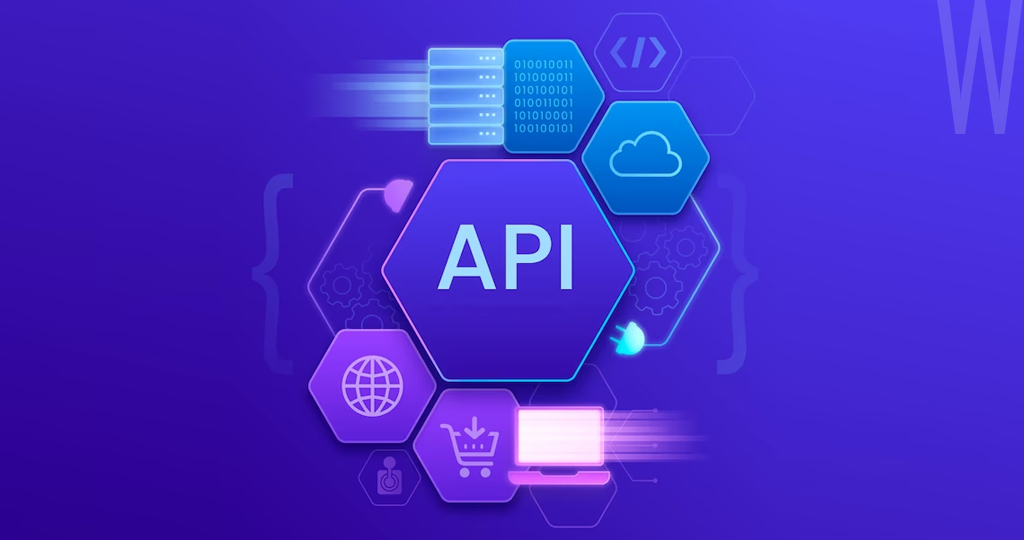TABLE OF CONTENT
What is mobile app development?
In simple words, the mobile app development process flowchart includes ideating, strategizing, and executing a set of processes to leverage the digital medium and build accessible modules within the medium (applications) for mobile devices (typically a phone app).
To describe what mobile app development is for dummies, you could just say it is creating a method in which a person can access a certain business service just by using their mobile phone. Mobile business applications are built to help the employees of a certain business similarly access some internal service that the business supports (maybe an HR or Finance portal, where they can access all their pay sheets).
Multiple teams work together to build a mobile application, but a major part of the process lies on the shoulders of the design and development team. Now according to the platform in which a mobile application is built, a business can hire different mobile app development teams, i.e., android developers, iOS developers, cross-platform developers, etc.
At the very beginning of the digital revolution, mobile app development was pretty much basic and lacked both aesthetics and functionality. But as hardware capabilities exponentially increased in the last decade, mobile app development has evolved into a crucial part of the digital ecosystem! Now, mobile applications can perform a wide range of functions - from simple to highly complex. Paired with technologies like Artificial Intelligence, Machine Learning, Data Analytics, AR & VR, and many others, the mobile app development market has further expanded the scope for brands, enterprises, and even governments.
Why mobile app development is needed by enterprises - scalability and flexibility
As the world enters into the digital economy, brands, enterprises, and governments are expanding their digital arsenal by developing mobile applications to capture and deliver value at scale in the market.
Be it an android or iOS application, the fundamental tenet of mobile apps is its simplicity. Mobile apps help us navigate through and leverage the complex digital world with a simple and user-friendly interface. It acts as a bridge for people and businesses to take a peek into this complex digital environment around them. In a rapidly evolving digital world, brands and organizations should think beyond the traditional framework existing for mobile app development and start looking at mobile application development as a complex artform.
With the latest innovations happening in the field of digital and technology itself, it can be an opportunity for businesses to evolve into truly consumer-centric brands. For instance, recollect some of the first-ever, cutting edge, mobile apps ever developed, and look at an average mobile app in the App store or Play Store today. The differences in their capabilities are vast. And so is the journey of the consumers from nascent digital users to digital beings.
To keep up with these fast-evolving consumer segments, businesses need to identify demands and customer pain points even before the customer realizes it! So, a solid mobile app development strategy will be a launchpad for businesses to explore the digital possibilities they can capitalize on in the market. 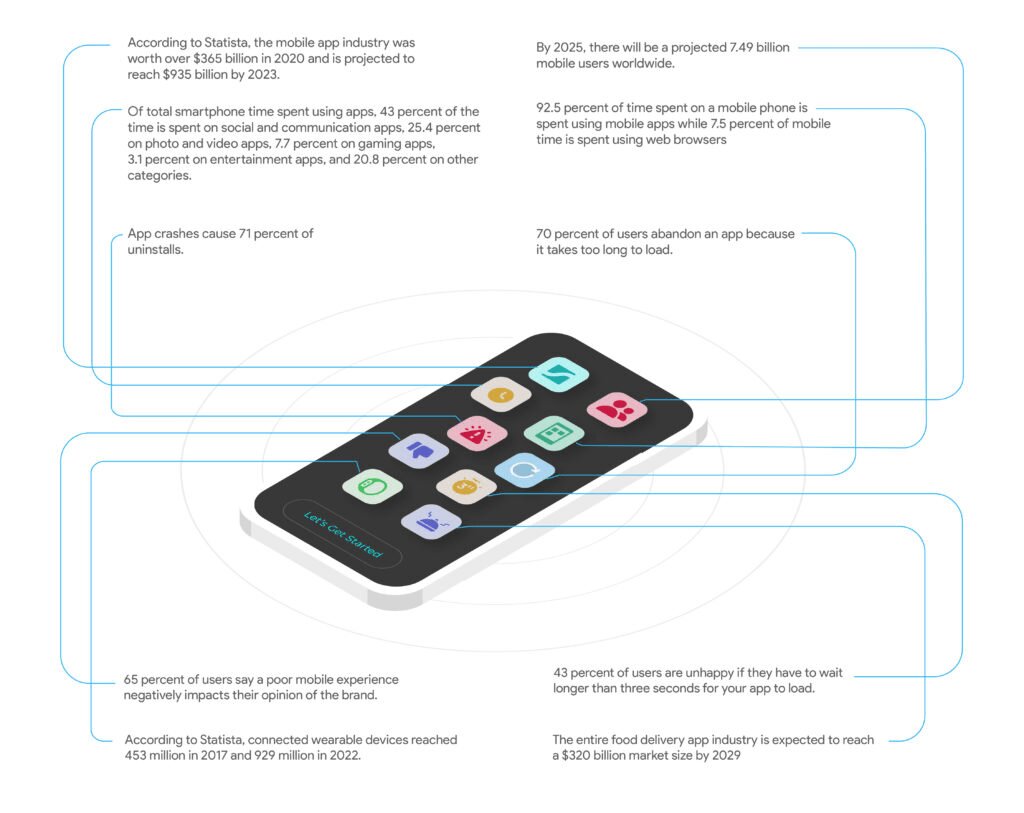
Why is creating an app for your business a good idea?
Here are some of the main reasons why businesses should focus on mobile app development:
- Deliver your brand message/services/value directly to your consumers
- Build a stronger and more resilient brand
- Easily identify new scopes for your business
- Understand your consumer demography and their behavior more accurately
- Drive engagement across different consumer segments
- Stand out from the crowd and distinguish yourself from the competition
Read Also - The Role Of Mobile Apps In The Healthcare Industry
What are the different types of mobile app development?
There are 2 main types of mobile app development
- Native app development
- Hybrid/Cross-platform mobile app development
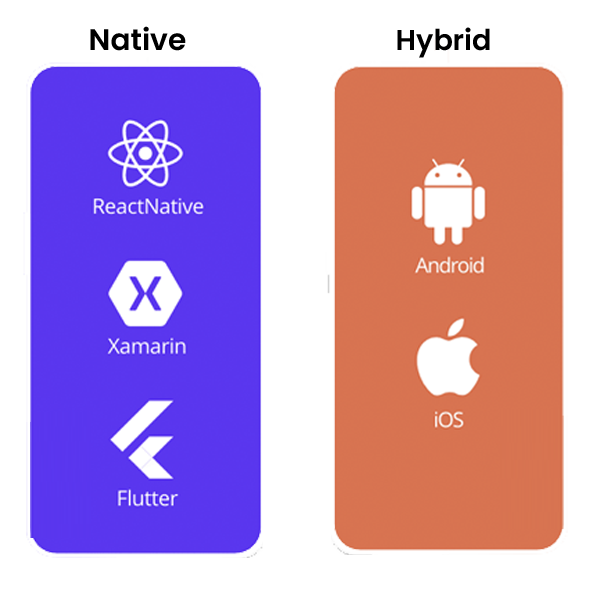
#Native app development
Native app development is split into two main categories-
- Android app development
- iOS app development
Native mobile app development is a process to build applications that run on specific or native mobile application platforms, like Android or iOS. These are the two largest platforms for mobile app development, and together, they make up nearly 96% of the global mobile app development market share. So, businesses are most likely to prefer native mobile app development as it allows them to tap into a larger market share.
Even if you look at individual numbers of the mobile app development market, Android has nearly 2.7 million applications, making it one of the largest digital powerhouses. Despite a relatively smaller market share than Android, the iOS platform still offers nearly 2 million applications for its users!
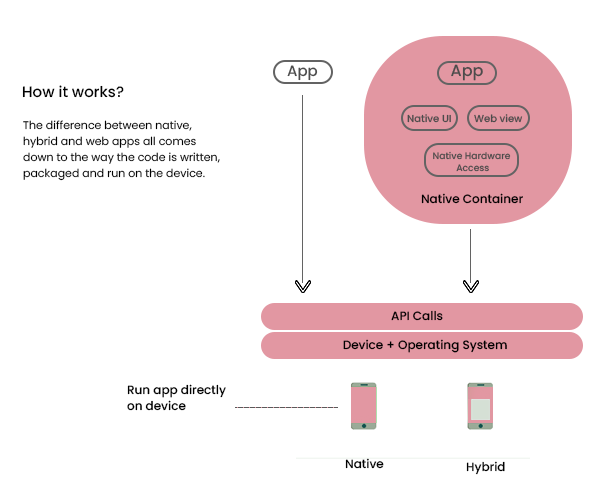
#Hybrid/Cross-platform app development
When it comes to native applications, businesses have to build individual applications for every platform. Meaning double the resources spent on the skill, time, design, money, etc. Enter hybrid applications. Hybrid or cross-platform applications solve this problem for businesses by allowing them to run on multiple platforms at the expense of a single code.
This is particularly helpful for startups and small-scale businesses that don’t have the budget to build individual applications for individual platforms. But as hybrid apps share a single code, they may not deliver 100% experience like native apps do, but is still not so far from native applications in terms of functionality. One of the biggest advantages when it comes to cross-platform mobile app development is the minimal resources it takes to build one, and one of the biggest disadvantages is that updates will be relatively slower, and bringing on new features will be a bit difficult for a business.
What does a typical mobile app development process flowchart look like?
The steps for building an app are pretty straightforward but in all reality, differ from business to business.
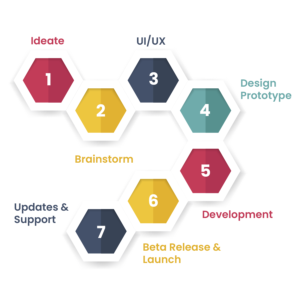
Ideate
Know what's that one factor that's common among some of the greatest applications ever built? The idea! Many people think that the complexity of an idea is proportional to the success of the mobile app development process. However, if you look at million-dollar applications, they rather focus on solving a particular problem for the user (or a part of the problem!). Meaning, user-centric, simple ideas are shown to be more successful than otherwise “complex” ideas.
Brainstorming
With leading industry experts across various industries in our team, we offer cutting-edge consulting to our clients to bring their envisioned ideas to life. While the core of the application is about the idea and the user-centricity, it is also important to focus on how you deliver the solutions. Combined with our 20+ years of experience in the market, we are proud to say that we have been one of the perfect mobile app development partners in the market for brainstorming new ideas and one-upping their existing ones for our clients!
UI/UX
From user research to mapping out the user journey to wireframing - it all happens here. As discussed previously, wireframing is one of the most crucial aspects of any digital product development, and it serves as a foundation or a blueprint that other teams involved can refer to. While many mobile app development companies make the mistake of jumping right into development or prototyping before getting their UI/UX right, we strongly feel that user research should happen even before prototyping or coding, and even designing!
Design Prototype
Based on the UX research, we will have insights into the needs and wants of the target audience. Based on those insights, we can start the design process. While it is important to focus on filling any gaps in the user journey, equal attention should be given to the aesthetics of the application and the navigation. Getting this right will set the brand tone for your application, delivering a highly personalized experience for your users.
Development
Picking up the right mobile app development framework plays a huge role in the outcome of your application, and it is important to think long-term before locking in on a framework. Besides, the ultimate goal for the development team is to write clean and efficient codes. It is important to get the logic right, and any discrepancies in this stage will affect the entire user experience, and ultimately, the app’s performance. At W2S Solutions, our mobile app development teams are responsible for building some of the most successful applications in the market. Our senior developers contribute this feat of theirs to the groundwork that happens before they roll up their sleeves and get into the coding part.
When asked about it, one of our senior developers says, “...it’s important to understand the core of the business for which you’re building your application. Without that, developers would be left without direction.”
Beta release & launch
Getting your almost finished product to beta release can give you extraordinary insights about your business mobile app. You create a "loose" yet functional version of your application for a relatively smaller audience group. This will help quality analysts understand the real-time behavior of the application, and can also help you, as a business, to understand more about the key performing areas in your application. The goal of quality analysis is not just to identify and resolve the bugs, but to understand the whole picture of the application, and identify where it feels incomplete. Once these gaps are filled, your application will be ready to be launched in the platform it’s built for.
Updates and support
Contrary to what many people think, mobile app development is not a one-stop process. Rather, it’s an evolving process. The needs of the users will continue to evolve, and their devices will be upgraded over time. So, it is important for your application to keep up with this market movement. Rolling out mobile app updates is one of the most practical ways you can keep up with the users, and deliver a seamless brand experience to them. We also provide extensive support for the applications we build. We have a dedicated team on app development in Texas with whom you can get on a call as soon as possible when you're stuck somewhere in the mobile app development process flow or facing any other issues.
Pro tip: Don't slack on the wireframes!
Wireframes are a visual representation of an app's structure. They help you visualize the layout and user flow, allowing you to test feasibility before building your website or app. Wireframes can also be used as an aid for creating mockups, which are more advanced versions of wireframes but still serve as useful tools for testing ideas before coding them into reality.
Wireframe templates vary depending on the complexity of your project and its intended audience, but most wireframe templates fit within two different categories: "basic" and "advanced." Basic templates include simple boxes with text inside them; advanced templates have more sophisticated layouts with background images and gradients overlaid onto each box shape.
Here are a few examples for you to understand more about wireframes.
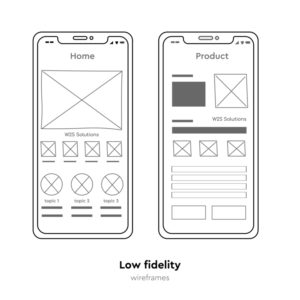
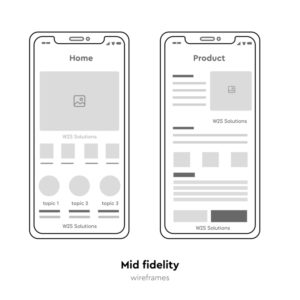
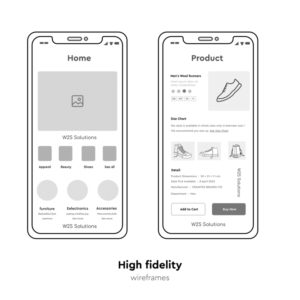
Read Also - How to build a location tracking app
What are the common challenges companies face in mobile app development?
Data security
Mobile app security and data security are major concerns for app developers. Mobile applications can store a large amount of sensitive data, including user information, payment details, and more. Developers must ensure that the data is securely stored, encrypted, and transmitted to prevent unauthorized access and data breaches.
Choosing the right technology stack
Choosing the right technology stack is key to successful mobile app development. Developers must select the best tools, mobile app frameworks, and libraries to develop a high-performance mobile app. The technology stack should be tailored to the needs of the project, and developers must keep in mind factors such as scalability, compatibility, and performance.
Managing complexity
Mobile apps can be complex and difficult to develop. Developers must be able to break down the app into smaller, manageable chunks and identify the steps needed to complete the project. This includes understanding the user flow, designing the UI/UX, and coding the app. This is particularly true in enterprise application development where the complexity increases with more people.
Managing expectations
It's important for developers to manage their client's expectations when developing a mobile app. This includes being realistic about timelines, budgets, and capabilities, as well as setting realistic goals for the project.
Working with teams
Mobile app development is a team effort, and developers must be able to collaborate effectively with other members of the team. This includes communicating regularly, setting clear expectations, and working together to solve any issues that arise.
Managing resources
Developers must manage their resources carefully when developing a mobile app. This includes tracking the time spent on the project, allocating resources to the most important tasks, and ensuring that the budget is not exceeded.
Testing and debugging
Testing and debugging are essential steps in the mobile app development process flowchart. Developers must thoroughly test the app and identify any bugs or issues before releasing it to the public. This includes testing the app on multiple devices and platforms to ensure compatibility.
How to choose a mobile app development company?
- Understand the company’s technical capabilities
- Explore their clientele and portfolio
- Have a complete understanding of the services provided by the company
- If possible, try to assess their problem-solving abilities
- See if they follow all the legal frameworks
- See if they are active in tech communities
- See if they are transparent about the process
- Communication
Hey Siri!
The demand for iOS mobile app development has been steadily increasing in the market, and is expected to grow by more than 25% between 2021 & 2031! Our technology experts at W2S Solutions identify that brands are fetching positive ROI with iOS applications. The platform is previously known for the highest percentage of in-app purchases and paid app subscribers, despite the relatively smaller market share than Android. However, if you are interested in building iOS apps, you should know the basics of how to make iOS applications.
Read Also - Why do developers prefer Swift for iOS app development?
Mobile app development trends you shouldn’t miss in 2023
As one of the top mobile app development companies in the market, our market experts have identified some of the top mobile app trends that brands and organizations should consider including in their strategy in 2023. As the tech landscape gets more and more competitive, it breeds innovation and cutting-edge capabilities for businesses that can help craft and deliver unparalleled experiences for consumers. However, many companies are not equipped to meet the new challenges that a volatile and dynamic market may present to them. With increased inflation and economic destabilization, companies should invest in technologies that build resilience for their operations. Only by expanding their end-to-end tech capabilities can they penetrate deeper markets, and establish a steady flow of revenue for their business.
Here is the list of top technology trends that are impacting mobile app development in 2023:
- Data fabric
- Decision intelligence
- Metaverse
- Artificial Intelligence and Generative AI
- Composable applications
- Total experience
- Industry cloud platforms
- Drones
- Hyperautomation
- Edge computing
- Sustainable technology
To know more about these top technology trends, check out this article- ”Top technology trends to watch out for in 2023”
Conclusion
The mobile app development space is vast and growing and it is easy to get lost in all the details. This guide is designed to keep you on track as you embark on your new app development journey or if you are looking for some turnkey advice mid-build. Either way, this guide should offer you some invaluable tips on mobile app development.
If you need some expert assistance on your app build or would simply like to discuss some aspects of this guide and how it may fit into your process, get in touch with our mobile app development experts at W2S Solutions.








